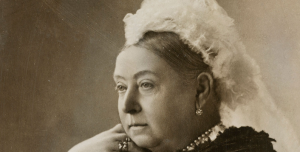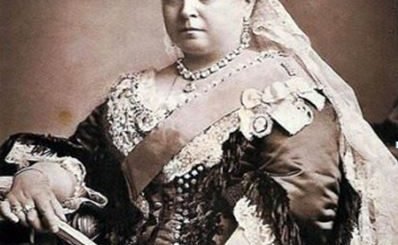10 Things You didn’t know about Queen Victoria
Born as Princess Alexandrina Victoria on May 24, 1819, Queen Victoria was a British monarch who ruled from 1837 to 1901. At the height of her reign, Victoria was undoubtedly the most powerful person on the face of this earth. Her 63-year reign saw a lot of transformation in the British Empire. Clearly, one does not simply get to reign for that long a period without being firm and resolute. Worldhistoryedu.com presents ten major things that you should know about Queen Victoria.
She proposed to her husband

Queen Victoria and Prince Albert, her husband.
Queen Victoria was simply the boss at everything that she did. She always knew exactly what she wanted and how to get it. This goal-getter attitude translated into her love life. Queen Victoria proposed to her first cousin, Prince Albert of Saxe-Coburg-Gotha, three years after their first meeting. Their mutual uncle, Leopold (later King Leopold of the Belgians) was instrumental in Victoria’s meeting with Albert. Upon taking the British Crown in 1837, the Queen proposed to Albert.
Read More: Everything that You Need to Know about Queen Victoria’s Husband
Queen Victoria is the second-longest reigning monarch in British history
Victoria was just 18 years when she inherited the British throne from her late uncle, King William IV. For the next 63 years, Queen Victoria reigned over a vast empire. This feat of achievement is only surpassed by Queen Elizabeth II (record was broken on September 9, 2015). Let’s put into perspective how long Victoria’s reign was. There were about 11 different Prime Ministers during her reign. The prime ministers were William Lamb, Robert Peel, John Russel, Edward Smith-Stanley, George Hamilton-Gordon, Henry John Temple, Earl Russel, Benjamin Disraeli, William Ewart Gladstone, Robert Gascoyne-Cecil, and Archibald Primrose.
Across the Atlantic, the U.S. had 17 different presidents. They were Martin Van Buren, William Henry Harrison, John Tyler, James K. Polk, Zachary Taylor, Millard Fillmore, Franklin Pierce, James Buchanan, Abraham Lincoln, Andrew Johnson, Ulysses S. Grant, Rutherford B. Hayes, James A. Garfield, Chester A. Arthur, Grover Cleveland, Benjamin Harrison, and William McKinley. Queen Victoria’s reign also saw the empire engage in a number of wars in Crimea, Africa, and Afghanistan.
Read More:
- 10 Longest Reigning British Queens and Kings of All Time
- Queen Elizabeth II’s Remarkable Coronation Ceremony
Single motherhood was part and parcel of her life
Queen Victoria was only 8 months old when her father died. Her father, Prince Edward the Duke of Kent, was the fourth son of George III. Her father’s passing meant that the Duchess of Kent, Victoria’s mother, was left to single-handedly raise the young Victoria. The journey was anything but difficult for little Victoria. Her mother, under the influence of her private secretary, Sir John Conroy, maintained a strong grip on the young Princess Victoria.

Queen Victoria cast a depressed figure upon the death of her husband and her mother in 1861. A state she was in for almost a decade.
Fast forward into her marriage; Queen Victoria had the pleasure of spending just about 20 years with her husband. In 1861, her husband, Prince Albert, sadly died from bouts of cold and pneumonia. This tragedy, as well as her mother’s death (also in 1861), was what kicked the Queen into a decade-long depression. The Queen took to wearing only black and shut herself from the public for about a decade or so.
Read More: Everything that you need to know about Queen Victoria’s father
Queen Victoria had 9 children
The Queen had 5 daughters and 4 sons. Her first child, Princess Victoria, was born on 21 November 1840. And the last child of the Queen, Princess Beatrice, came on 14 April 1857. What this means is that Queen Victoria spent about 17 years giving birth to 9 children. The second of these children was Edward who later became King Edward VII.
Victoria was not the most nurturing of mothers in the world. She despised nursing her kids. It was not uncommon to find governesses attending to the needs of the children. Her husband, Prince Albert on the other hand, was much more nurturing to the kids than the Queen. After his death, Victoria drew a lot closer to them. Her youngest child, Beatrice spent a great deal of time with her. And even right up until the Queen’s death, Beatrice remained domiciled in the same palace as the Queen.
Read More: Histories and Biographies of Queen Victoria’s Nine Children
Height was not her strongest suit
At about five feet tall, Queen Victoria, ruler of United Kingdom of Great Britain and Ireland, was a relatively short person. And all throughout her life, she had always carried a few extra pounds of weight. Her weight was significant in the aftermath of her mother’s and husband’s deaths. However, none of those factors stopped Queen Victoria from coming back and back again. She spoke eloquently and was not the type to cave in easily. This was particularly evident in the negotiations she had with the various Prime Ministers. Therefore, neither the height nor the weight got the better of one of history’s most iconic queens.
Read More: Queen Elizabeth II’s Four Children
The Resolute Desk in the Oval Office was a gift from Victoria

Queen Victoria gifted the Resolute Desk to the Americans.
Queen Victoria gifted the U.S. a desk made out of oak timbers to the then President of the U.S., Rutherford B. Hayes. This gift was her way of building strong bonds with the U.S. The desk arrived in the White House in 1880. Its materials were made out of a broken Royal Navy ship (HMS Resolute) that the Americans had earlier fixed for the Brits. When it was time for the HMS Resolute to be dismantled, Queen Victoria thought it would be a very kind gesture to use the oak timber from the ship to make a desk for the Americans. That’s how the desk in the Oval Office of the White House got its name-the Resolute Desk.
She was the 5th in line to the British Throne
When Victoria was born, her father and 3 other uncles were way ahead of her in the line of succession. With her father’s death 8 months after her birth, Victoria became the 4th in line for the throne. Fate will have it that all 3 of her uncles (Prince George, the Duke of Cornwall; Prince Fredrick, the Duke of York; and Prince William, the Duke of Clarence) left no legitimate heir to the British throne. The onus was on Victoria to steer the affairs of the empire right from age 18. In retrospect, the empire could not have gotten a king or queen better than Victoria. She is famed to have fixed the deplorable image (of the royal family) left behind by her uncles (George IV and William IV). The Queen breathed new life into not just British monarchy but in monarchies all across Europe.
Queen Victoria was a prolific writer
It has been said by many of her biographers that Queen Victoria wrote about 2000 words in her diary every day. These extensive writing started in her adult life. Upon her death, the grand total culminated into about 120 volumes of work. They included letters and correspondence she had with her children, advisers and her beloved husband, Prince Albert.
Read More: Edgar Allen Poe – Biography and Major Facts
Queen Victoria carried the hemophilia gene
Members of the Royal family today with hemophilia owe their illness to Queen Victoria. The so called “Royal disease” that you hear often about started from Queen Victoria. The Queen herself did not have any symptoms of hemophilia, but she did carry the gene.
The gene Hemophilia is a blood-clothing disease that has some dire symptoms. Sufferers often bleed profusely to death. This is because after say a cut to their body, the blood does not coagulate properly. How do we know for certainty that the illustrious Queen Victoria was the carrier? According to scientists, the gene tends to hover predominantly in the maternal line. The men in the family tend to develop it while the women in the family carry it.
In Victoria’s case, we can say with all certainty that she transferred the gene to three of her children. They were Leopold the Duke of Albany; Alice, Grand Duchess of Hesse; and Princess Beatrice. These royals in turn passed it on to their children across different royal families in Europe. This is how come the disease hemophilia is known today as the “Royal disease”.
Queen Victoria successfully survived all six known assassination attempts on her life
Ever since time immemorial, assassination attempts on rulers and monarchs have been sort of the order of the day. The Victorian era saw about 6 separate attempts on the Queen’s life. Majority of those would-be assassins were mentally insane people, at least according to the court verdicts. The first assassination attempt on Queen Victoria came when she was just 21 years old. The perpetrator was an 18 year-old young man, Edward Oxford. The two shots fired from Edward missed the Queen’s carriage that was riding in London. His efforts were foiled when spectators brought him down.
The names of the 5 remaining would be-assassins were: John Francis (in 1842), William Bean (in 1842), William Hamilton (in 1849), Robert Pate (in 1850), and Roderick Maclean (in 1882). In the assassination attempt carried out by Roderick Maclean in 1882, the Queen and her entourage were close to Windsor train station. The Queen survived that one as well. Investigations concluded that Maclean was mad and then sentenced to a mental institution for the rest of his life.
Although all six assassination attempts were ghastly, the attacks always raised Victoria’s reputation a notch or two. The public always warmed up to the Queen after every attempt. In one case, the love for the Queen was so great that a group of students heroically thwarted the assailant’s effort. The Queen once remarked that: “It is worth being shot at to see how much one is loved,”. In the end, the Queen was always the bigger beneficiary of those attempts. The would-be assassins always faded into obscurity while the public came to love their beloved Queen Victoria even more.



























